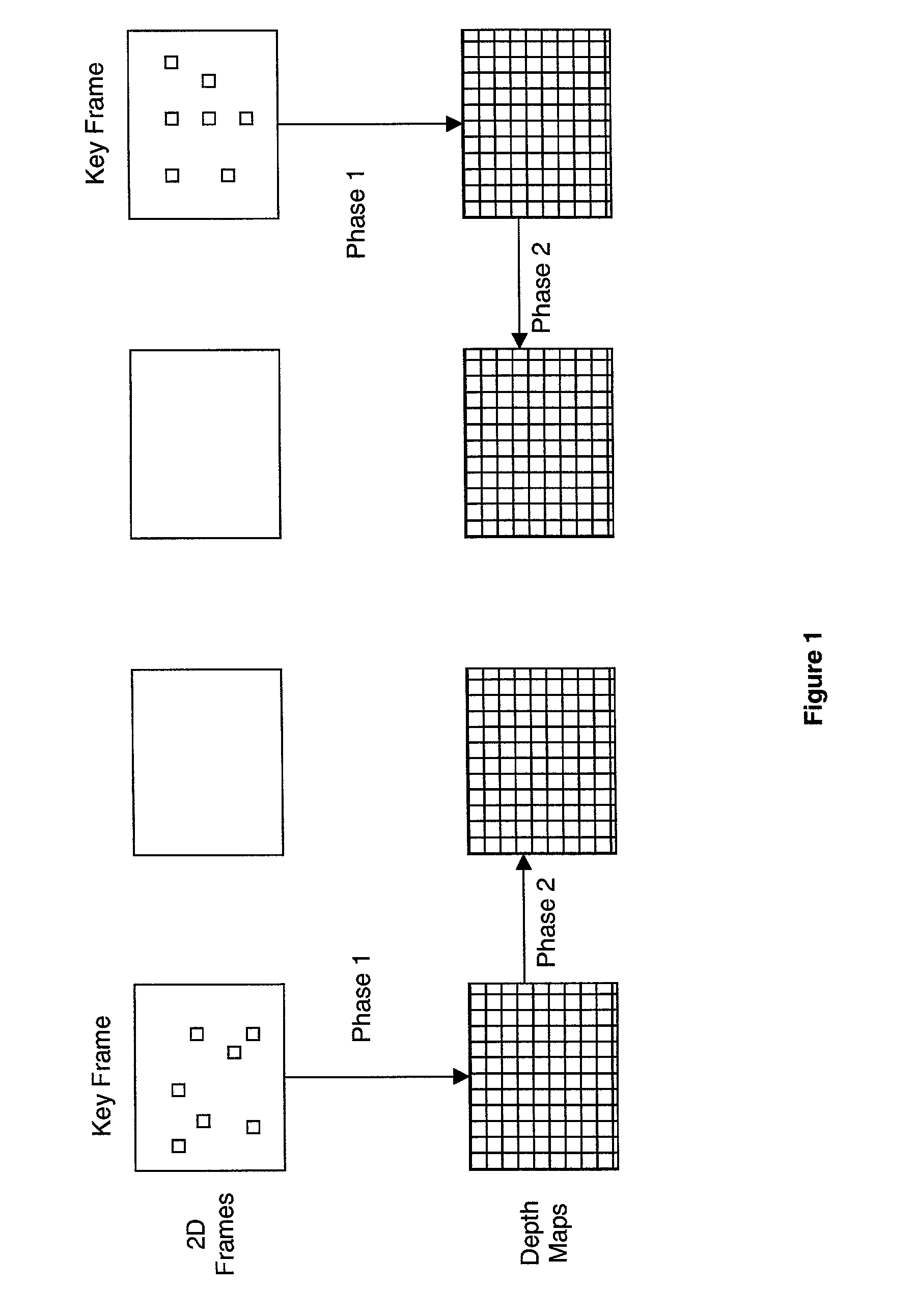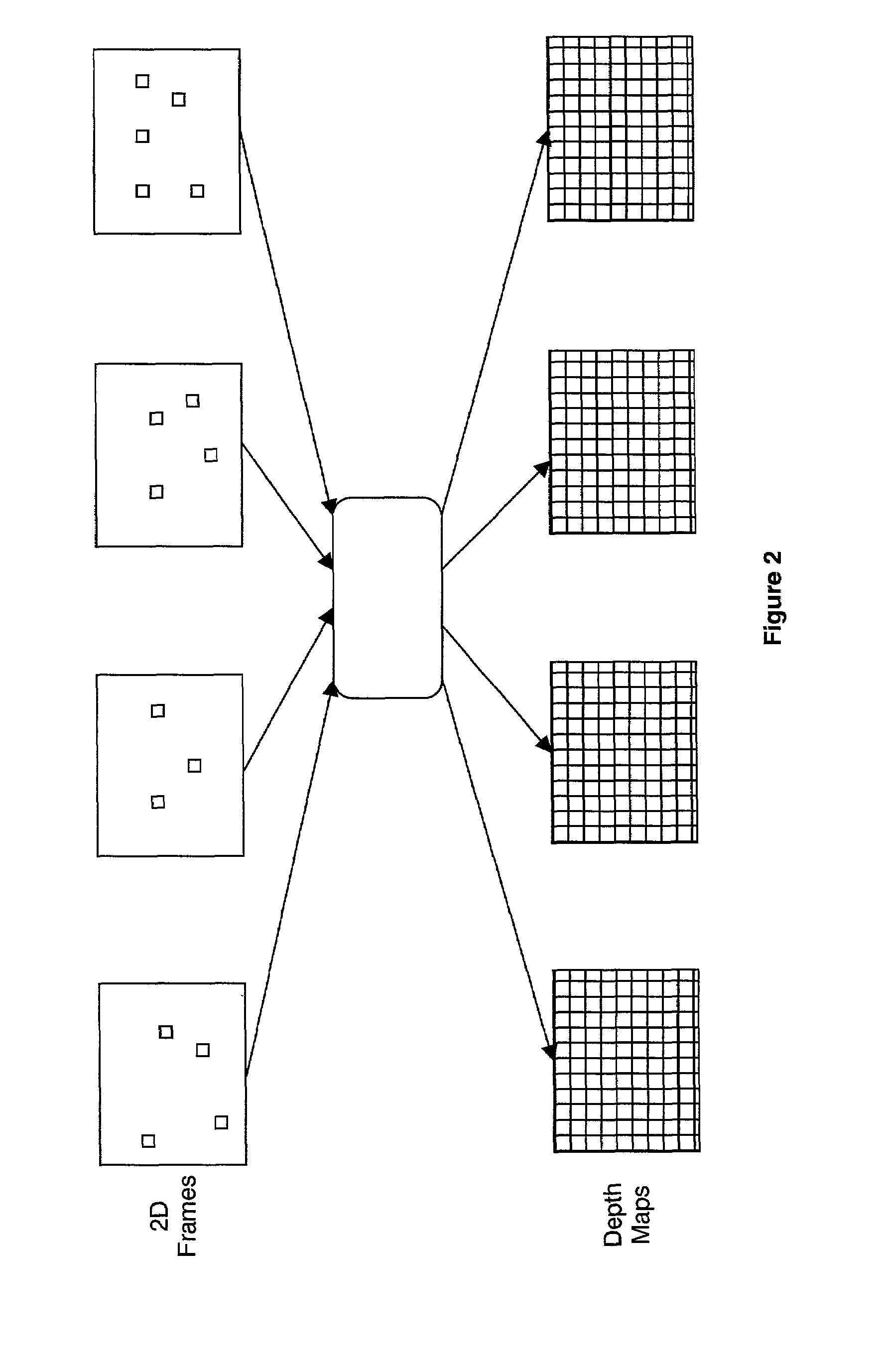Conversion and encoding techniques
a technology of conversion and encoding, applied in image analysis, instruments, computing, etc., can solve the problems of poor consistency of depth maps from one frame to the next, insufficient 3d points, and insufficient single images to accurately
- Summary
- Abstract
- Description
- Claims
- Application Information
AI Technical Summary
Benefits of technology
Problems solved by technology
Method used
Image
Examples
Embodiment Construction
[0040]A depth map represents the 3D profile of a scene from a specific viewpoint. When a dense depth map is associated with a 2D image it encodes the distance between the camera used to capture the image and the observed objects for each pixel in the image. An objective of the present invention is to recover a depth map given only a sparse set of 3D points, which may be derived from one of the following means.
[0041]To achieve this an image sequence containing a number of image frames may be decomposed into a series of shots. A shot ideally contains one or more image frames in which the inter-frame differences are relatively small. The frequency and placement of shot boundaries in an image sequence may be dependent upon the motion in the sequence. Shot boundaries may be identified manually by an operator or automatically using a shot detection algorithm. A shot detection algorithm takes as input a sequence of image frames and outputs one or more shot boundaries. The shot boundaries e...
PUM
 Login to View More
Login to View More Abstract
Description
Claims
Application Information
 Login to View More
Login to View More - R&D
- Intellectual Property
- Life Sciences
- Materials
- Tech Scout
- Unparalleled Data Quality
- Higher Quality Content
- 60% Fewer Hallucinations
Browse by: Latest US Patents, China's latest patents, Technical Efficacy Thesaurus, Application Domain, Technology Topic, Popular Technical Reports.
© 2025 PatSnap. All rights reserved.Legal|Privacy policy|Modern Slavery Act Transparency Statement|Sitemap|About US| Contact US: help@patsnap.com



